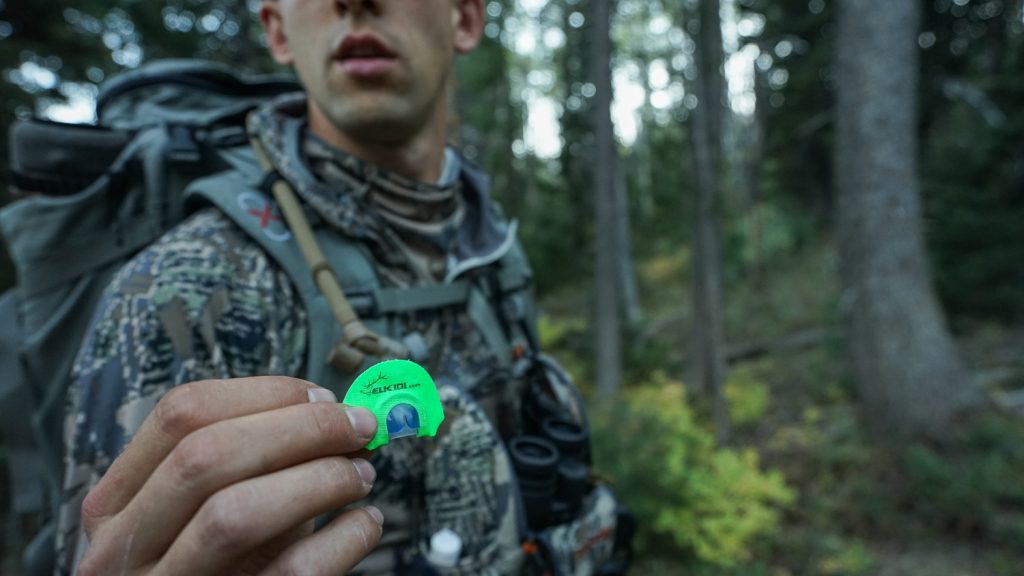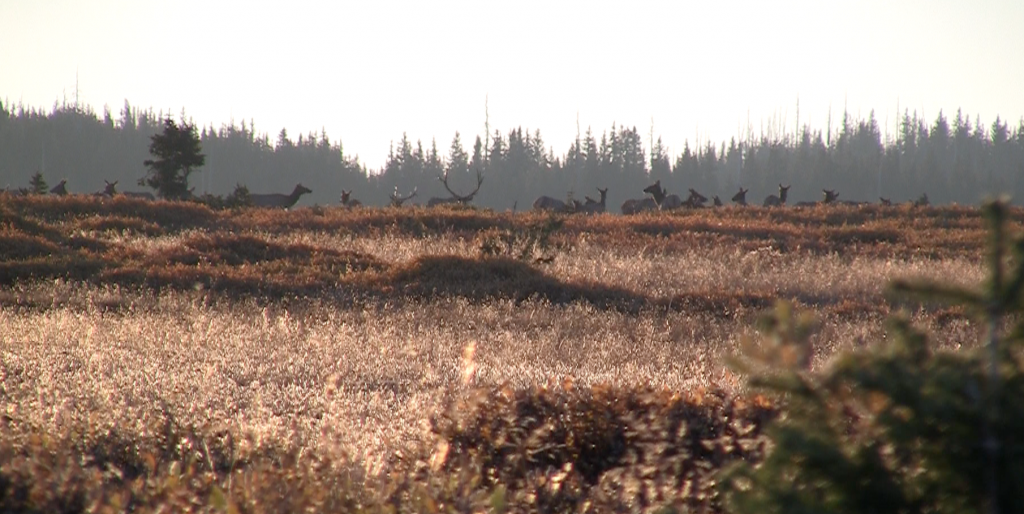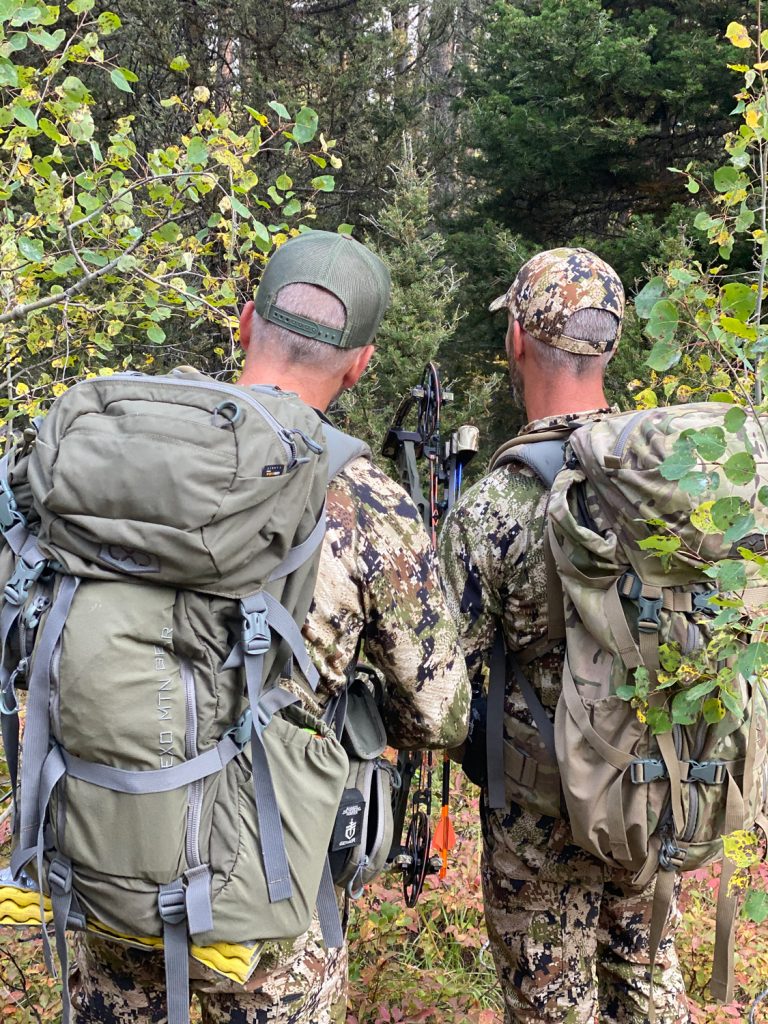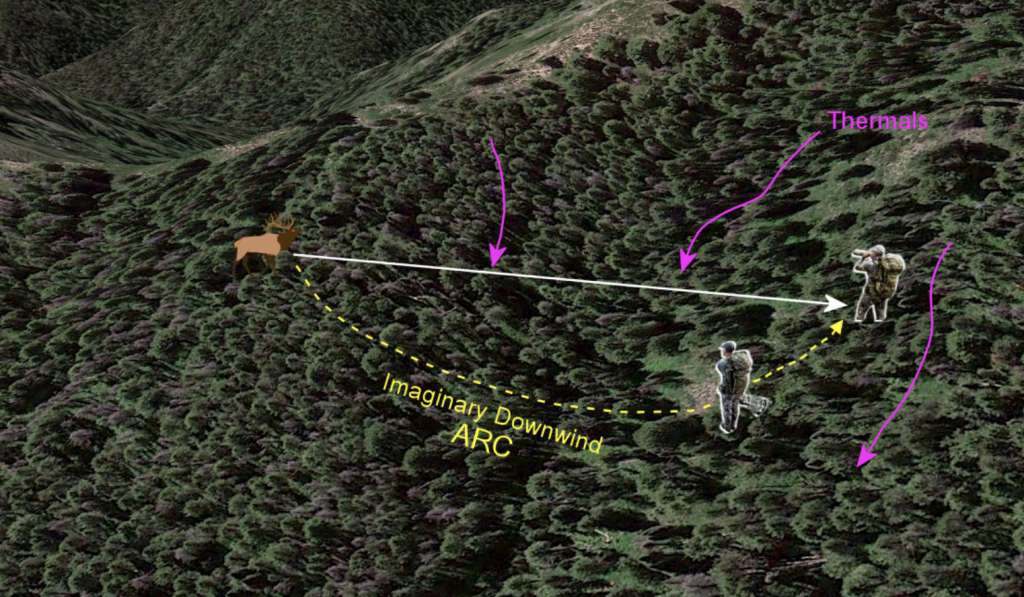Elk Calling Setup and Tactics

I’m so pumped that elk season is just around the corner. In a few short weeks, we will be piling into the backcountry in search of the magical sound of a bugling bull elk. Even if you are only hunting over the counter tags for spikes or cow elk in Utah, for me, hearing that first bugle of the season is exhilarating. Getting close enough to that elk for a shot opportunity is a whole different story. This article will focus on my approach to getting close to elk and setting up on them for an optimal shot opportunity.

There are many approaches to hunting elk. Some of these approaches include calling elk, spotting and stalking, ambushing in transition areas, sitting over water, etc. I love to call elk, but the approach that seems to work best for me is a combination of stealth and a little bit of calling when necessary. Most elk on heavily pressured public land don’t come running into a bugle or a cow call so I am disciplined when I use my calls. Once I locate elk either visually or by hearing them sound off, I like to first study the wind and make sure my approach will put me in a situation that is most advantages to the prevailing wind direction. Then I sneak in as close to the elk as possible without being detected or giving up my location. Let me emphasize that determining the wind direction and hunting into the wind is the only successful way I have found to get close to elk. The time of day and the slope of the mountain will usually determine the direction of the wind. The general rule is that warm thermals will pull the wind uphill during the warmth of the day and cooler thermals will pull the wind downhill in the early mornings and evenings. This rule all goes out the window if there is a storm in the area or if the wind is switching from uphill to downhill because competing thermals will cause the wind to swirl and can be very inconsistent. If you have hunted elk long enough, this scenario usually leads to elk running in the other direction. An elk’s sense of smell is what keeps them alive from predators and I have never been able to fool an elk’s nose. If I lose track of where the elk are when trying to get close, I will use a lost calf call to either get the bull to bugle back or have another elk call back to me. The key is being patient, keeping the wind in your face, and getting close to the herd undetected.
Once the herd is located and I’m within 100 yards, I assess the situation and create a game plan. This is where your elk calling set up is key and can make or break your chances for a shot. I also need to mention that having a good hunting partner is super helpful and will usually result in more shot opportunities. Elk have an un-canning ability to pinpoint sounds. If you are solo and start blowing a cow call or challenging a bull within 100 yds, the elk will know exactly where that sound is coming from and if you are in open terrain and they don’t see another elk, they will get suspicious and won’t come to your call. If you are hunting heavier timber, solo calling can be more effective. Let’s break down these two scenarios.
Calling with a hunting buddy

The goal is to set up so that the caller is pulling the bull past the shooter within bow range. I don’t like my caller to be directly behind me because this usually results in a hard quartering or frontal shot. Side note, frontal shots can be very deadly, but your margin of error is much smaller, so you need to be close. A higher percentage shot is broadside so you can take out both lungs. To get this broadside shot, your caller needs to be at an angle to the shooter and at least 50 to 75 yds beyond the shooter. Shooter needs to set up on the downwind side of the caller. Here is a diagram of this set up.

Based on the terrain and if possible, make sure you as the shooter have multiple shooting lanes to the approaching elk. I intentionally stand in front of a tree or bush to break up my outline. Standing behind the tree will make it a little easier to draw your bow undetected but will likely limit your shot opportunities because of the tree or bush that is now in the way. Scan the area in front of you and look for natural funnels or topography that the approaching elk will take. Make sure you are ranging multiple landmarks prior to the elk showing up so you can focus on drawing your bow at the right time rather than worrying about ranging distance. The biggest advantage of having a good caller is the ability to improvise. If the elk is doing the opposite of what you think it should do (which is usually the case) then your caller can quickly adjust positions and try and draw the elk past the shooter without giving up the location of the shooter. As the shooter, I always have an elk reed in my mouth to stop the elk when it is in my shooting lane. I have used this ARC set up for big bulls, spikes and cows.
Solo Hunting Setup
Setting up and calling elk as a solo hunter has its unique challenges but there are a lot of very successful hunters that only hunt solo and call in elk. An important consideration when setting up as a solo hunter is being very aware of your sound. Like I mentioned above, when you are close to the herd and you start blowing on a call, the elk will pinpoint your location. Anytime you make a sound, you need to move beyond that location for your setup. If I know elk are in the area, I will let out a calf mew or a bugle and then quickly and quietly move up 30-50 yards in the down wind direction toward the elk. This way if they are coming in then they will go to the last sound which you have now moved away from. Something else I have learned is If you are set up on the opposite side of a large meadow and you are trying to call elk, usually an elk will come to the edge of the meadow but will then hang up and not risk coming out of the cover, especially if they can’t see another elk. This scenario can be a good strategy to use a decoy as a solo hunter.

Every time I venture into the elk woods it is an education. What you think is going to work usually doesn’t, but every encounter should be a learning experience. Eventually, with enough experience and sometimes a little luck, it all comes together, and you will say to yourself “that was easy”. Until then enjoy the journey and don’t get frustrated. Elk are smart animals and that’s why we call it hunting.
Good hunting this fall!!
